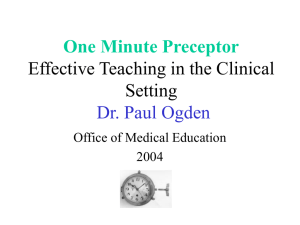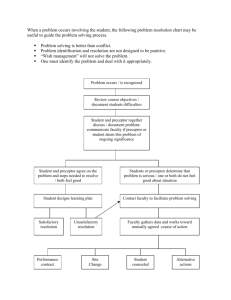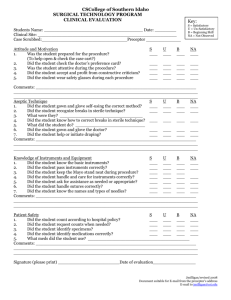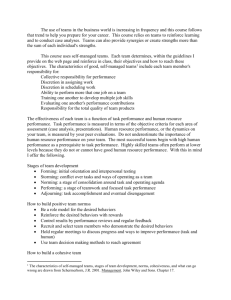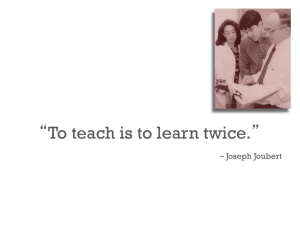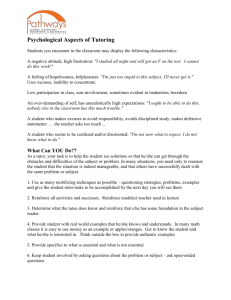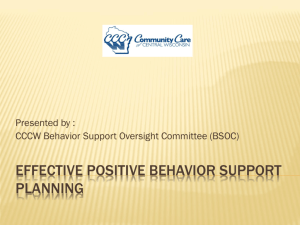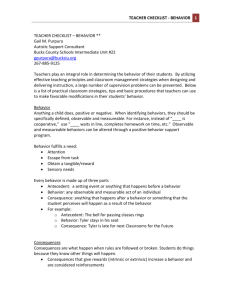Teaching Residents to... Teach
advertisement
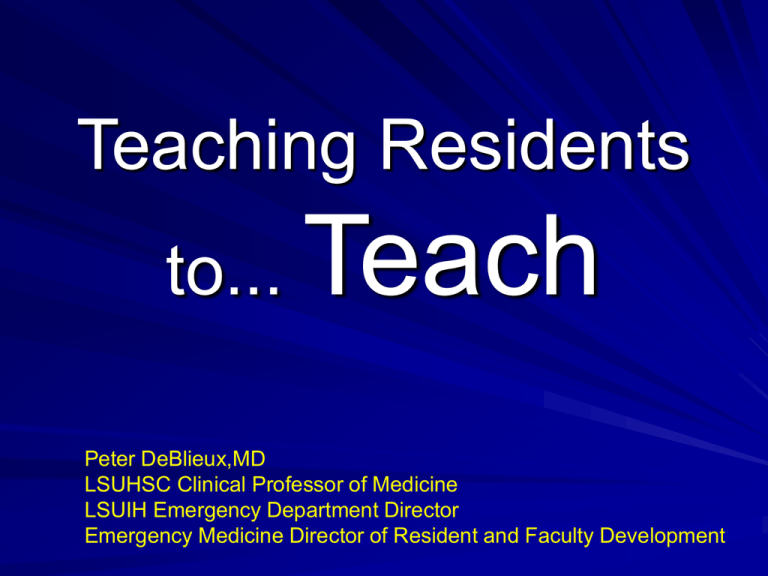
Teaching Residents to... Teach Peter DeBlieux,MD LSUHSC Clinical Professor of Medicine LSUIH Emergency Department Director Emergency Medicine Director of Resident and Faculty Development Objectives At the end of this presentation participants will be able to: Demonstrate principles of Adult Learning Perform a One Minute Preceptor Reflect on their own teaching practices Great Teachers are... Made not Born Example is not the main thing in influencing others. It is the only thing.- Albert Schweitzer Majority of Academic Physicians are… Accidental Educators Did you actually plan on a life of teaching? Accidental Educator Medical Education – Learning the knowledge, skills, attitudes, and behaviors that promote the development of a physician. The Golden Rule of Medical Education... Treat learners as you would like them to treat patients. As if that patient was you! – The Purpose of Education is to Make Yourself Obsolete as a Teacher Continuum of Medical Education/Competence Continuum Student Clinician Faculty Supervision Patient Care Responsibility Novice Expert Patient Caring and Learning Patient Facilitator Learner Establishing Ground Rules Creates a safe learning environment No put downs verbal or non-verbal, no matter how tempting Speak for yourself Everyone is responsible for their own learning Expect unfinished business, too many exercises, not enough time Why Should Doctors Teach? Enhancement of their own knowledge base and problem solving skills Development of learning habits and skills enabling lifelong maintenance of professional competence Creation of and fostering a TEAM mentality Why Should Doctors Teach? Fosters goodwill among house- staff Self satisfaction of teaching Availability of residents – you are doing it anyway, near peer phenomenon, role modeling Barriers to Teaching Time Training Service vs Education Structure of Adult Learning Problem Solving Concepts Concepts Principles Principles Principles Facts Facts Facts Facts Facts Principles of Adult Learning Motivation is established, the material is useful Assurance that learning is active Concepts not facts are taught Feedback is provided promptly Principles of Adult Learning Environment is non-threatening Material is related to existing knowledge Learners are treated as individuals Learning is best when self-paced Bedside Teaching Medicine is learned at the bedside and not in the classroom; the best teaching is that taught by the patient himself.Sir William Osler Attributes of Effective Teachers Enthusiasm for the mission Incorporates student in the learning process Problem solving emphasis Student-centered instruction Humanistic Orientation Attributes of Effective Teachers Organization/clarity Knowledge Group instructional skills Clinical supervision Clinical competence Modeling professional characteristics Techniques for Successful Bedside Instruction • Clear planning and preparation Effective leadership Total and constructive participation Delivering Feedback Performance Model Evaluations Summative –Judgement –After the fact Formative –Change in behavior –Ongoing Ideal Behaviors for Delivering Feedback Eye contact Enthusiasm Ask and encourage questions Ideal Behaviors for Delivering Feedback Clinical supervision Clinical competence Modeling professional characteristics Ideal Behaviors for Effective Feedback Interested in the learner Honest Well defined goals Ideal Behaviors for Effective Feedback Clear explanations Problem solving emphasis Student centered instruction Ideal Behaviors for Effective Feedback Timely fashion Focused on behaviors Limited in volume Ideal Behaviors for Effective Feedback Safe environment chosen Focused on patient caring Allows learner self assessment Ideal Behaviors for Effective Feedback Use of open ended questions Offers recommendations for improvement Summarizes for closure Barriers to Effective Feedback –Requires role models –Emotional investment –Observable behaviors –Time Pearls for Effective Feedback –Praise in public….Perfect in private –Ego sandwich- first praise for appropriate responses then- identify performance challenges and correct lastly-- finish with encouragement for participation –Ask learner to summarize “take home messages” One Minute Preceptor Teaching on the Go! Get a commitment Probe for supporting evidence Teach general rules Reinforce what is done correctly Correct mistakes Reinforce what is done correctly One Minute Preceptor Teaching on the Go! Get a commitment A 3 year old with ear pain- do you think this OM? Probe for supporting evidence What leads you to make this diagnosis? Teach general rules Reinforce what is done correctly Correct mistakes Reinforce what is done correctly One Minute Preceptor Teaching on the Go! Get a commitment Probe for supporting evidence Teach general rules The majority of OM cases are not caused by bacteria Reinforce what is done correctly I like the way that you made the child feel safe and comfortable during your exam Correct mistakes Reinforce what is done correctly One Minute Preceptor Teaching on the Go! Get a commitment Probe for supporting evidence Teach general rules Reinforce what is done correctly Correct mistakes I think you should spend more time teaching the mother about the risk-benefit of antibiotics in OM Reinforce what is done correctly I think that your search on OM and complications was a brilliant way to prepare you for ….. One Minute Preceptor Teaching on the Go! Select a partner-one plays the role of the student/learner, the other the preceptor Choose one of the following: URI-viral syndrome Asthma Vaccinations Get a commitment Probe for supporting evidence Teach general rules Reinforce what is done correctly Correct mistakes Reinforce what is done correctly
